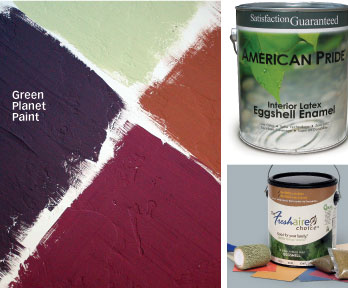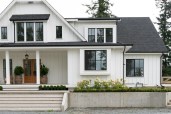Paints=Points
VOCs in paints, wood stains, and other products are included in the NAHB Model Green Home Building Guidelines and USGBC’s LEED for Homes rating systems for residential construction. Both programs encourage the use of low-VOC coatings and require some level of verification of the product spec to gain credits toward certification. Neither program gives extra credits for zero-VOC or natural coatings.
NAHB Model Green Home Building Guidelines. The housing industry’s voluntary checklist awards points for using flat interior latex coatings rated at 100 grams per liter (g/l) and non-flats at 150 g/l. The credit is located in the Global Impact section because, quoting the guidelines, “the environmental impact of using paints with relatively high-VOC levels is greater on the global scale than it is on the indoor environment.” In the latest draft of the ANSI National Green Building Standard, based on NAHB’s guidelines, architectural coatings are in the Pollutant Source Control section and specify VOC content limits of 50 g/l for flats and 100 g/l for non-flats.
LEED for Homes. Found in the Materials & Resources section (as opposed to the Environmental Quality section of nonresidential versions of the rating system), credits for using low-VOC paints, coatings, sealers, shellacs, and stains are based on the most stringent regulations being enforced. For instance, with regard to architectural coatings, LEED for Homes requires flat paints with 50 g/l and non-flats with 150 g/l, which is consistent with the Green Seal certification standard and levels that the California Air Resources Board was set to update this year. In fact, LEED for Homes references the Green Seal standard, GS-11, though applicable products only need to meet the standard, not be certified, to qualify for the credit.
All three standards also encourage using building materials that require no additional on-site finishing, thus eliminating paints and stains from the environmental impact equation.
–Rich Binsacca


